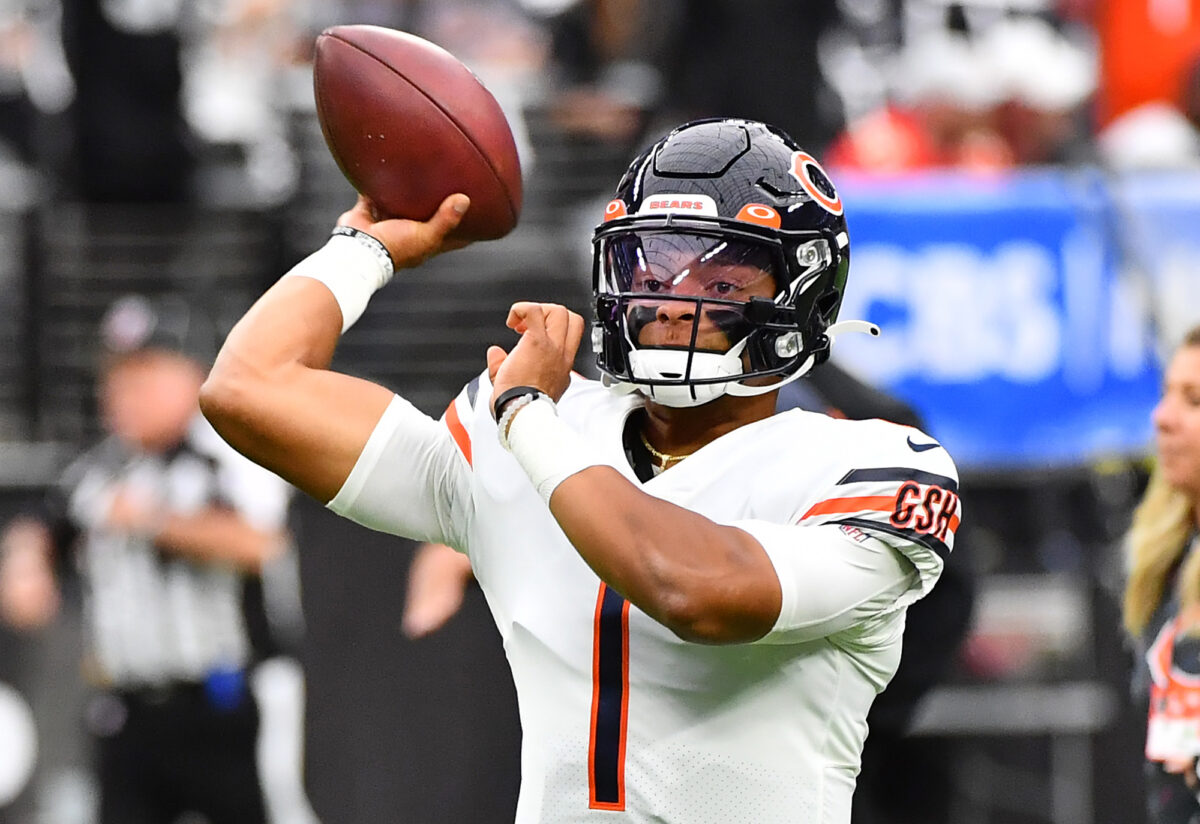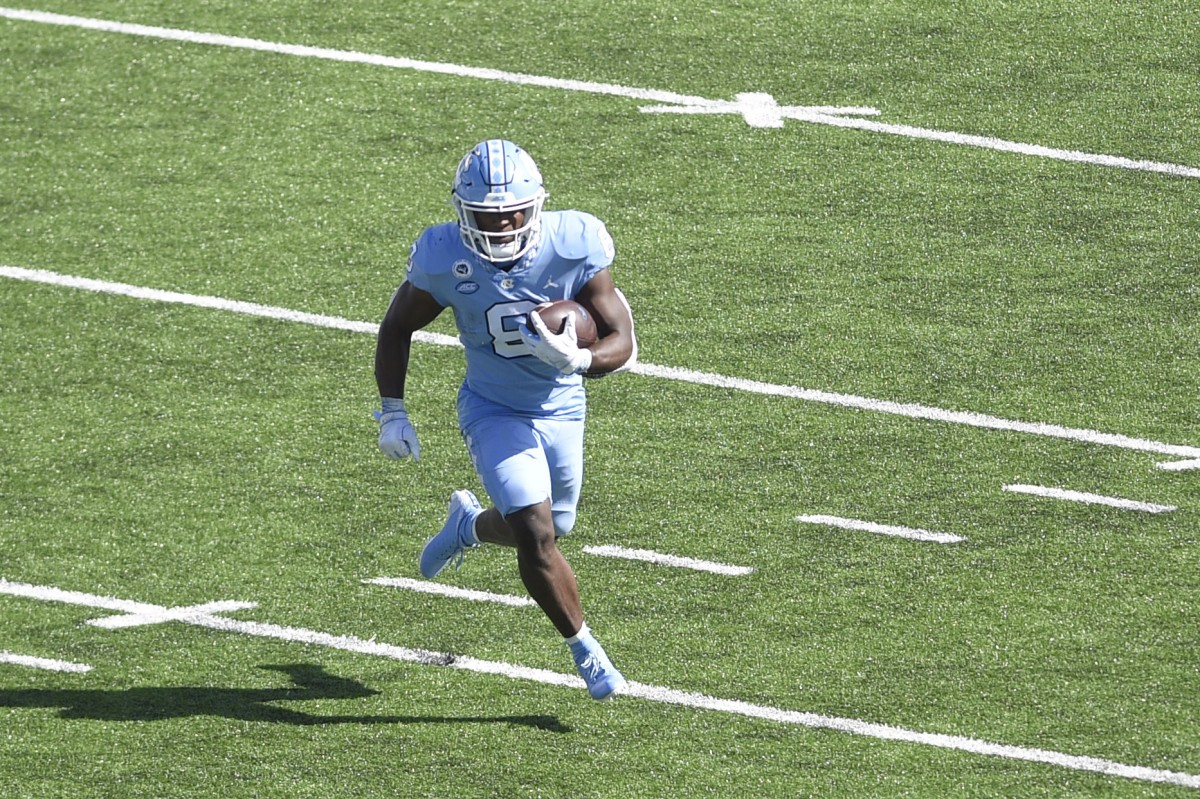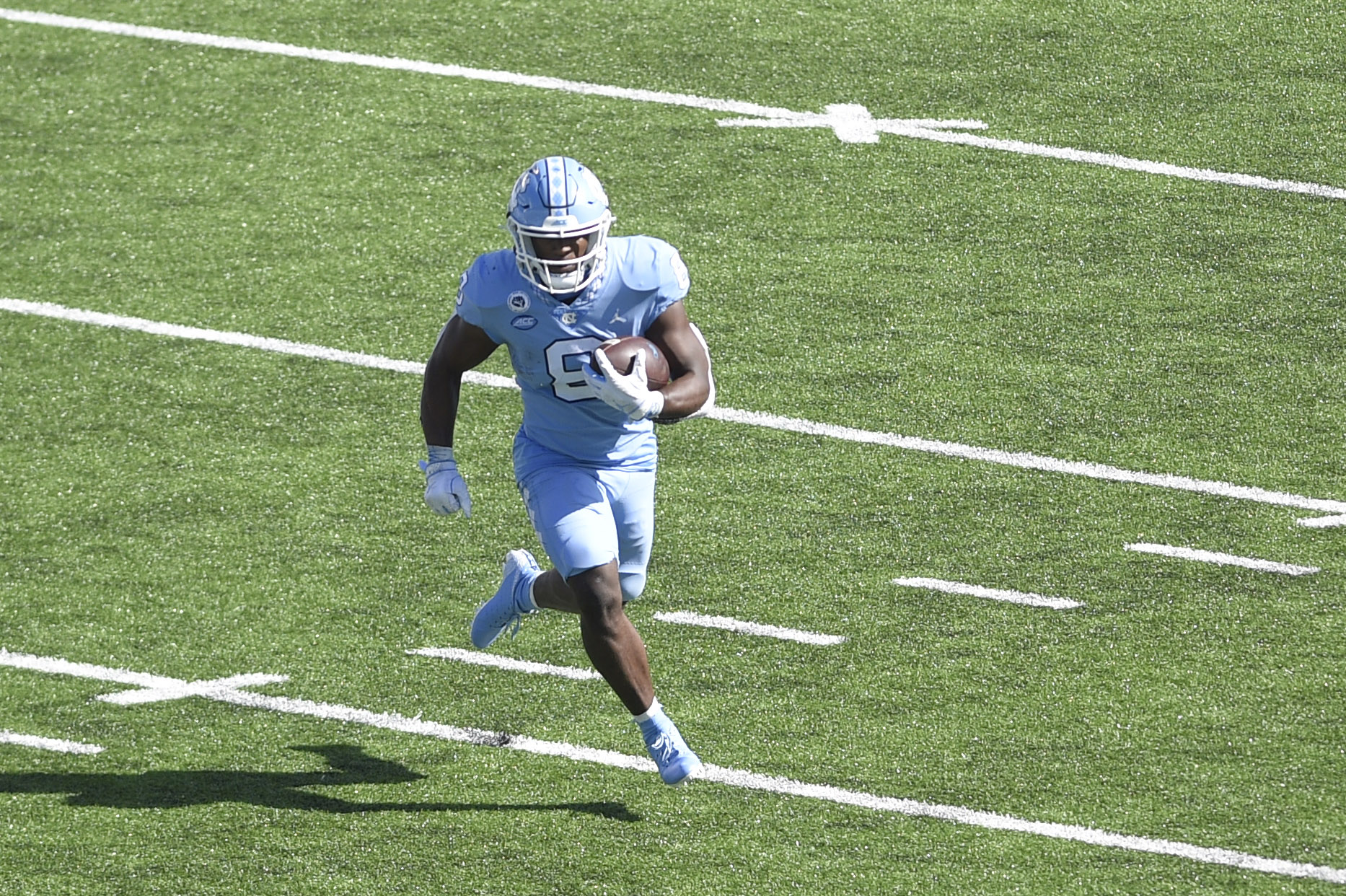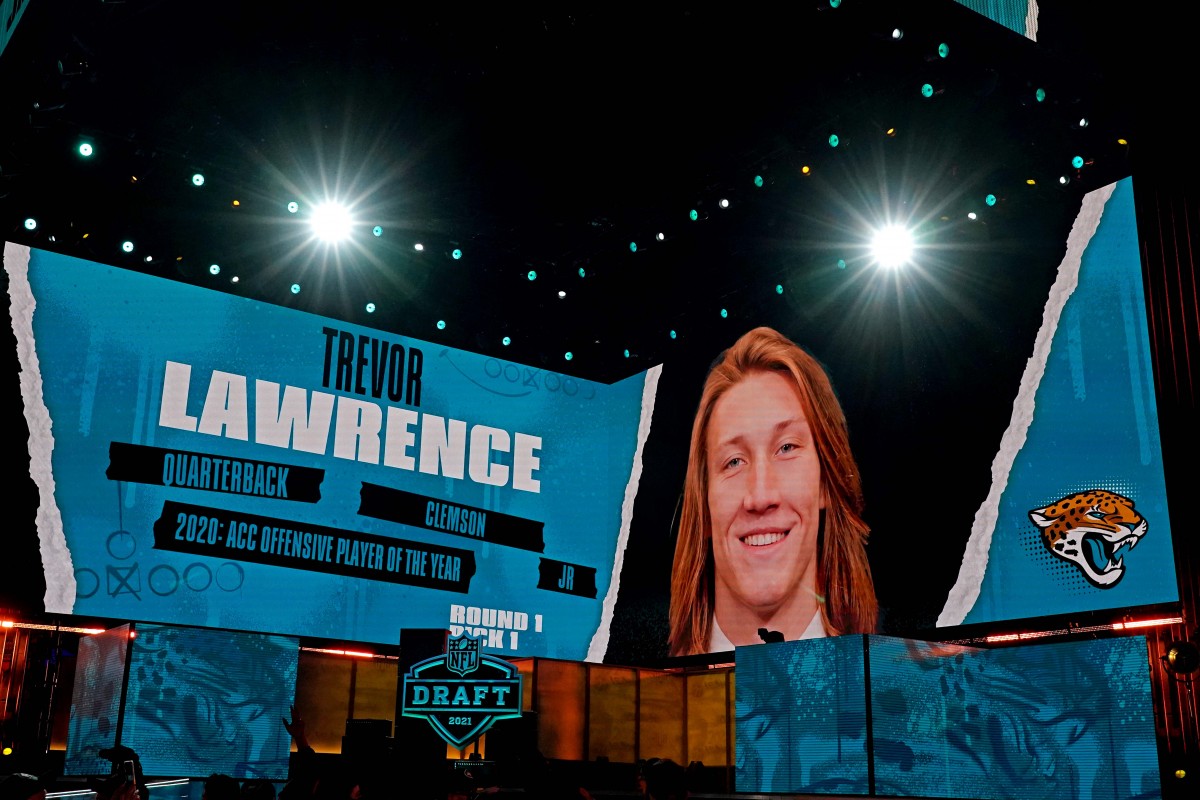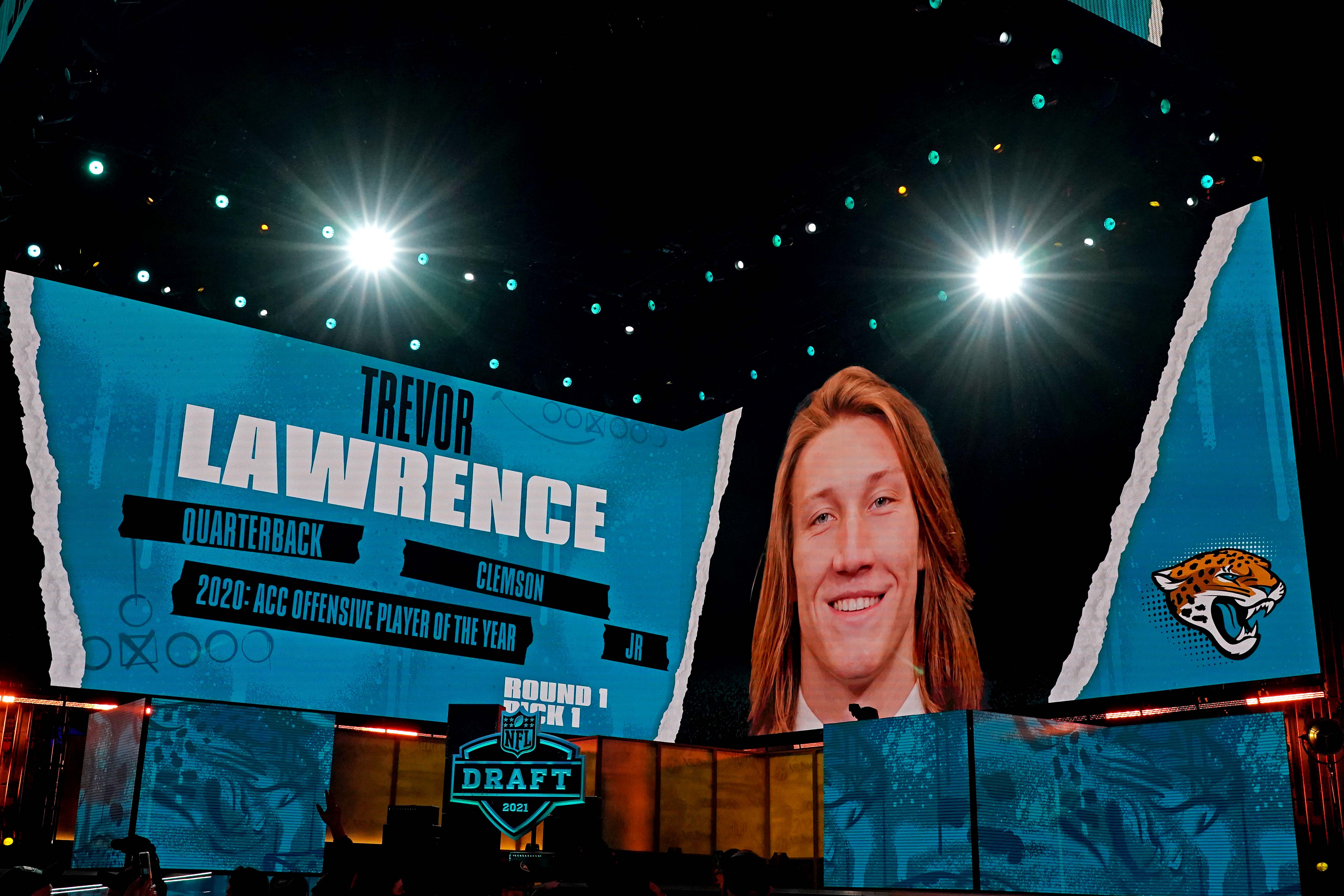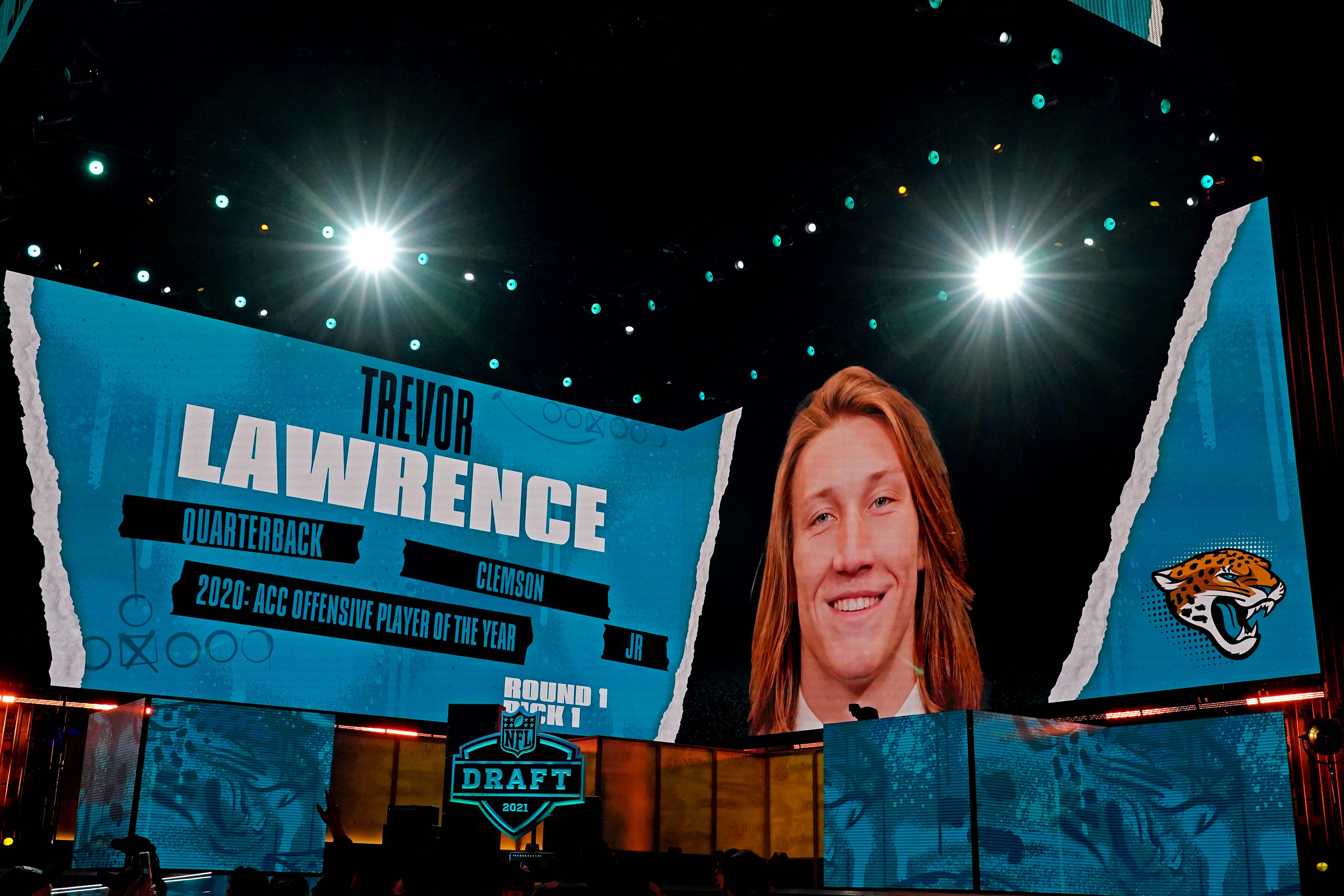Rookies command the TTT spotlight this week as we put a bow on Week 5 and look ahead to Week 6, which upon completion will put us a third of the way through the expanded 2021 season.
We’re ranking the top five fantasy rookies so far and forecasting their rest-of-season staying power at their current level of production on a 1-10 scale, going from least to most likely. Then we’re doing the same with our top three rookie fantasy disappointments, and rating each player’s respective chances to improve upon their current level of production on the same 1-10 scale.
It’s all to help fantasy general managers make better lineup and roster decisions with the typically volatile first-year players as the stakes grow increasingly larger moving deeper into the season.
A couple quick notes on our rookie ranks:
- Injured players — such as Baltimore Ravens WR Rashod Bateman and Jacksonville Jaguars RB Travis Etienne — who are either out for the season or have yet to play more than a game, have been removed from consideration.
- Also, more weight is given to the more valuable fantasy positions as scarcity helps elevate a running back over a similarly performing wide receiver for instance. A rookie’s average draft position is factored in as well, with later-round standouts given precedence over a similarly performing high draft pick.
That said, here are your top fantasy rookies to date, with rankings and statistics through Week 5 …
Best fantasy rookies (so far)
5. RB Elijah Mitchell, San Francisco 49ers
Current position rank (total point-per-reception fantasy points): 52 (31.9 in 3 games)
Positional ADP: 82
Most impressive achievement: The unheralded sixth-round pick (we’re talking actual NFL Draft here) out of Louisiana has snared the lead-back role in the Niners offense following veteran Raheem Mostert’s early season-ending injury. Mitchell has dealt with his own health issues, missing Weeks 3 and 4 with a shoulder injury, but returned Sunday to handle 11 of the team’s 16 running back/fullback touches and gain 62 yards in a 17-10 loss to the undefeated Arizona Cardinals.
Staying power: 6. It’s always a week-to-week RB situation with coach Kyle Shanahan, but Mitchell has, so far, leapfrogged more ballyhooed third-round pick Trey Sermon (more on him below) on the depth chart, outtouching (49-33) and out-performing (4.5-4.2 yards per touch) the fellow first-year back despite playing in one fewer game. The Niners’ zone-running attack might not be as potent as it used to be as the team is struggling at 2-3 with yet more quarterback and offensive injuries so far this season, but serving as the lead back in San Francisco is still a coveted fantasy role. Also keep in mind that veteran RB Jeff Wilson Jr. is due to come off the PUP list if he’s recovered from offseason knee surgery, but for now, the 49ers’ RB1 job is Mitchell’s to lose.
4. TE Kyle Pitts, Atlanta Falcons
Current position rank (fantasy points): 6 (60.8 in 5 games)
Positional ADP: 4
Most impressive achievement: It took a trip to London and a matchup against the New York Jets, but the fourth-overall pick came through his awaited breakout performance Sunday morning, catching nine of his team-high 10 targets for 119 yards and his first NFL TD. Pitts had been off to a slow start, grabbing 15 of 25 targets for 189 yards in his first four games and had only topped 50 yards receiving yards once with no scores. With WR Calvin Ridley missing the London trip due to undisclosed personal reasons, Pitts now leads the Falcons and ranks third among all tight ends with 308 receiving yards.
Staying power: 7. It’s been notoriously tough for rookie tight ends to make a fantasy impact, but Pitts is considered a once-in-a-couple-decades prospect as the highest-drafted tight end ever, and he’s off to a fine start. Matt Ryan and the Falcons are in need of a reliable target outside of Ridley, and the gifted 6-foot-6, 245-pound Pitts certainly fills the bill. He’s already a rare locked-in TE1 at a position of continued fantasy scarcity.
[lawrence-related id=461146]
3. WR Kadarius Toney, New York Giants
Current position rank (fantasy points): 47 (48.9 in 5 games)
Positional ADP: 83
Most impressive achievement: The first-round draft pick out of Florida — a collegiate teammate of Pitts — now leads the Giants in receptions (20) and trails only Kenny Golladay (282) with 281 receiving yards, but it’s really more about quality than quantity for the electric first-year wideout. There was certainly some of both Sunday afternoon in Dallas as Toney reeled in 10-of-13 targets for 189 yards — all before being ejected for throwing a punch — in a 44-20 loss to the Cowboys. The rest of the non-ejected Giants combined caught 11 of 24 targets for 105 yards in the contest.
Staying power: 8. Through his first three games and coming off a hamstring injury that scuttled his preseason, Toney had only four receptions for 14 yards on five targets. But with fellow wideouts Sterling Shepard and Darius Slayton missing the last two games with injuries and Golladay leaving early Sunday with a hyperextended knee, Toney has impactfully stepped into the void with 16 catches for 267 yards on 22 targets the last two weeks. And anyone who has seen Toney juking, slashing and jumping over and through opposing secondaries in those two contests can quickly see that he has the goods to finish as the Giants’ best offensive weapon this season. That’s as long as he, too, doesn’t succumb to the team’s injury bug.
1b. RB Najee Harris, Pittsburgh Steelers
Current position rank (fantasy points): 4 (96.5 points in 5 games)
Positional ADP: 11
Most impressive achievement: What’s not to like? The rookie from Alabama has stepped right in and dominated backfield touches for the Steelers, playing on 87 percent of the team’s offensive snaps through four games. As a result, Harris ranks third in the league in total touches so far with 106, including 28 receptions on 39 targets, which rank second and first, respectively, among running backs. In terms of total PPR points, Harris trails only Derrick Henry (132.5), Austin Ekeler (119.3) and the surprising Cordarrelle Patterson (101.8) with 96.5 at the position.
Staying power: 10. Harris has logged 78 of the Steelers’ 90 running back/fullback rushing attempts and 28 of the 29 RB/FB receptions, making him one of the league’s few true bell-cow backs. And with a declining Ben Roethlisberger now throwing less and less downfield, Harris has proved to be a valuable underneath target, and that role only figures to grow with the season-ending shoulder injury suffered by WR JuJu Smith-Schuster on Sunday. Barring injury, Harris is a locked-in RB1.
1a. WR Ja’Marr Chase, Cincinnati Bengals
Current position rank (fantasy points): 8 (98.4 points in 5 games)
Positional ADP: 23
Most impressive achievement: Chase has completely dunked on the “disappointment” narrative that surfaced following several glaring dropped passes in the preseason and caused him to slip a round or two in late-August fantasy drafts. The LSU rookie leads a talented WR corps with 35 targets and has caught 23 of them for 456 yards, ranking third in the league with a whopping 19.8 yards per reception. He’s also tied for second among pass-catchers with five TD grabs, trailing only the Los Angeles Chargers’ Mike Williams (6).
Staying power: 8. It’s going to be tough to keep racking up 30-yard-plus TD grabs — accounting for four of Chase’s five scoring receptions so far — but it’s also reasonable to expect the rookie to continue to expand and improve on his short and intermediate route tree as well. As it is, he’s had at least 13.4 PPR points in every outing so far, and he figures to finish the year as a high-end fantasy WR2 at worst.
Most disappointing fantasy rookies (to date)
3. QB Justin Fields, Chicago Bears
Current position rank (total PPR fantasy points): 34 (38.8 in 5 games)
Positional ADP: 19
Statistical shortfall: It took an Andy Dalton injury — and possibly a mandate from the team’s front office — to speed along the process, but Fields has finally been named the Bears’ starter going forward. After a disastrous nine-sack starting debut in Cleveland, Fields and the Bears have notched back-to-back wins, but from a fantasy perspective, Fields’ stunningly low volume has been a massive drawback. In his three starts, the Ohio State rookie has attempted only 57 passes for 388 yards and one TD while rushing nine times for 25 yards and no scores. So, yeah, 25.9 total fantasy points in three starts? Not usable — even in 12-team two-QB leagues.
Chances to improve: 10. With the Packers (twice), Buccaneers, Ravens and Cardinals serving as five of the Bears’ next eight opponents, Fields will be counted on for much more in an attempt to keep pace. Fields’ efficiency should steadily improve as well — even though the Bears’ subpar offensive line isn’t likely to help in the process. Particularly if he incorporates more of a rushing element to his game, he should emerge as a low-end QB2 in the second half of the season.
2. WR Elijah Moore, New York Jets
Current position rank (fantasy points): 114 (14.6 in 4 games)
Positional ADP: 59
Statistical shortfall: The second-round pick out of Mississippi is third on the team in targets with 20, but he has snared only eight of those for 66 yards — an average of only 8.3 yards per catch and 3.3 per target. In the meantime, fellow N.Y. wide receivers Corey Davis (36 targets-20 receptions-302 yards-3 TDs), Braxton Berrios (23-16-156-0), Jamison Crowder (15-11-85-1), Keelan Cole 9-7-160-0) and even Denzel Mims (4-3-73-0) have all been more efficient and productive.
Chances to improve: 9. The Jets’ wide receiver room is fairly well stocked for a bottom-feeder team, but things can only get better for Moore — who was on more than a few preseason late-round sleeper lists — and rookie QB Zach Wilson, who has completed only 57.3 percent of his passes and has thrown five more interceptions (9) than TD passes (4) to date. Moore certainly can be dropped in the meantime, though, if you need the roster space.
1. RB Trey Sermon, San Francisco 49ers
Current position rank (fantasy points): 62 (21.8 in 4 games)
Positional ADP: 35
Statistical shortfall: Sermon, the third-rounder out of Ohio State and a coveted midround summer fantasy draft target, clearly hasn’t progressed as fast as the coaching staff would’ve liked, and as aforementioned, he’s been overtaken on the depth chart by Mitchell. While the latter rookie was out in Weeks 3 and 4, Sermon did log 31 touches for 123 yards and a TD in two starts, but evidently failed to impress the coaching staff as he was quickly pushed to the back burner upon Mitchell’s return Sunday, playing only two snaps and getting one rushing attempt.
Chances to improve: 5. You have to figure that the playing time snub has lit a fire for Sermon, and he’ll use that as motivation for any opportunities he gets. Still, those opportunities might prove to be few and far between, unless Mitchell is re-injured or is plagued a rash of rookie miscues and/or Wilson takes longer than expected to return.
